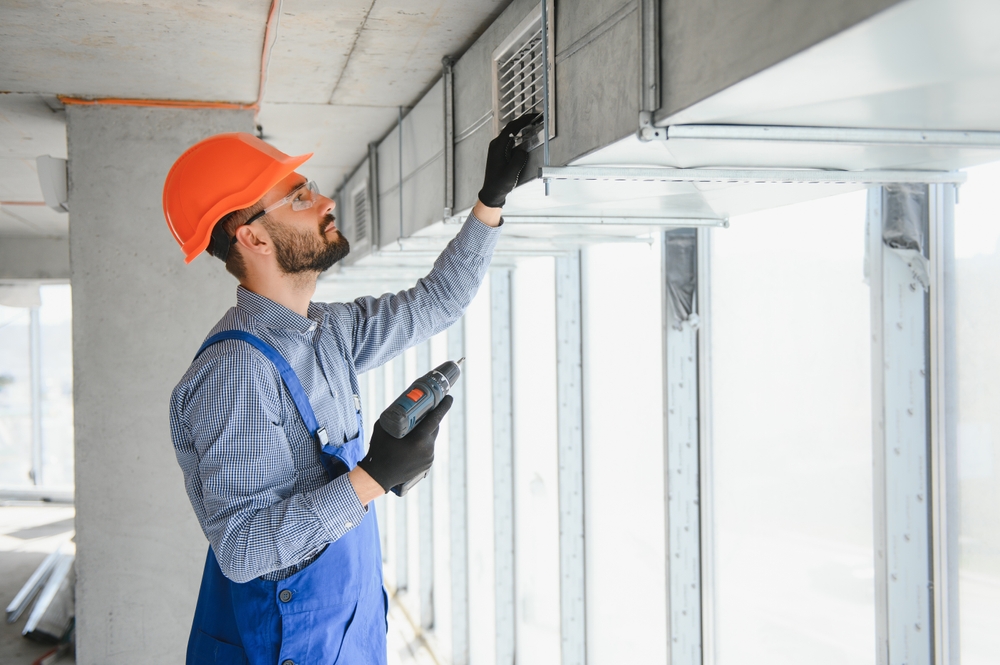Back to Basics is an article series that highlights important, but possibly overlooked, information facilities management professionals should know.

Before Jack Frost comes knocking on their doors, facilities managers should ensure their commercial facility’s heating, ventilation, and air conditioning (HVAC) systems are in tip-top shape.
A failed HVAC system can not only lead to discomfort for you and your occupants but also disrupt operations and lead to costly energy and repair bills.
Here are six tips to maintain your commercial HVAC system this winter:
1. Check and Change Air Filters
According to the Center for Energy and Environment (CEE), checking and changing filters is important because plugged filters could trip an HVAC high-temperature safety switch, requiring a manual reset. To prevent this from happening, check your filters once a month, and change them when needed.
Air filters are also important, according to the U.S. Environmental Protection Agency (EPA), because they catch particles that go through the air, including airborne contaminants such as viruses like COVID-19. Reducing these particles increases indoor air quality (IAQ) and makes your facility healthier. Learn more by reading “How Facilities Can Improve Their Air Quality” at Facilities Management Advisor.
2. Inspect Vents and Ductwork
Vents often get forgotten, which could lead to a concentration of dust in the air that could make your facility look dirty. Therefore, you should regularly clean vents and ductwork to provide adequate airflow.
Vents can be cleaned by vacuuming dust and dirt and by using a damp microfiber cloth on the outside. Ductwork can be cleaned using an industrial duct cleaning system or by vacuuming to loosen dirt and debris. For extensive cleanings, use tools with high-efficiency particulate air (HEPA) filters and consider chemical agents and disinfectants.
3. Calibrate Thermostats, and Consider Replacement
It’s important to have a thermostat that accurately reads the temperature. If the thermostat reads 67 degrees when it’s 70 degrees and you turn up the heat, this will increase your energy costs by 9%, 3% for each degree. On the other hand, thermostats that read too high won’t provide sufficient heat.
To ensure the thermostat is correct, compare its temperature reading with a thermometer’s after running the heating system for 15 minutes. If the two don’t match, make sure dirt isn’t blocking the sensors, clean the thermostat using canned air, and gently clean the components.
If this doesn’t solve the problem, consider other solutions like:
- Using a calibration screw to recalibrate the thermostat
- Checking the wiring
- Rebooting the thermostat
- Ensuring the HVAC unit is sized correctly
However, if these solutions don’t work either, think about replacing the thermostat.
4. Install New Smart Thermostats
Consider installing a new thermostat or an upgraded version of your existing smart thermostat. Today’s smart thermostats have advanced controls that include sensors, data analytics, intelligent algorithms, and the ability to be controlled by smartphone.
Smart thermostats make it easier to lower the temperature in the winter during unoccupied hours. For example, businesses unoccupied on weekdays from 6 p.m. to 6 a.m. and all weekends that set thermostats 10 degrees lower during those times could see energy savings between 20% and 40%, according to the CEE.
5. Inspect Insulation
Check for damaged or missing insulation in air handlers, ductwork, and piping, and determine whether your facility’s current insulation is sufficient or if it’s necessary to add or update it. If so, research the different types that can be used.
Adequate HVAC duct insulation saves energy and money; absorbs noise, which can increase occupant comfort and productivity; and cuts down on condensation that could result in microbial growth and cause other moisture-related damage.
6. Check the Building’s Envelope, and Make Improvements
Finally, check your building’s envelope, which includes foundations, walls, windows, doors, and roofs, for cracks, gaps, or damaged seals.
You should make repairs, seal air leaks, upgrade insulation, and install energy-efficient doors, windows, and roofs that could not only reduce your HVAC’s workload but also improve indoor comfort and create a greener building.
Learn More
By checking filters, vents, ductwork, and insulation, in addition to calibrating thermostats, installing smart thermostats, and making building envelope improvements, you’ll adequately prepare your facility for winter.
To learn more about how to make your facility winter-ready, read “4 Ways to Prepare Your Facilities for Winter” on Facilities Management Advisor.
